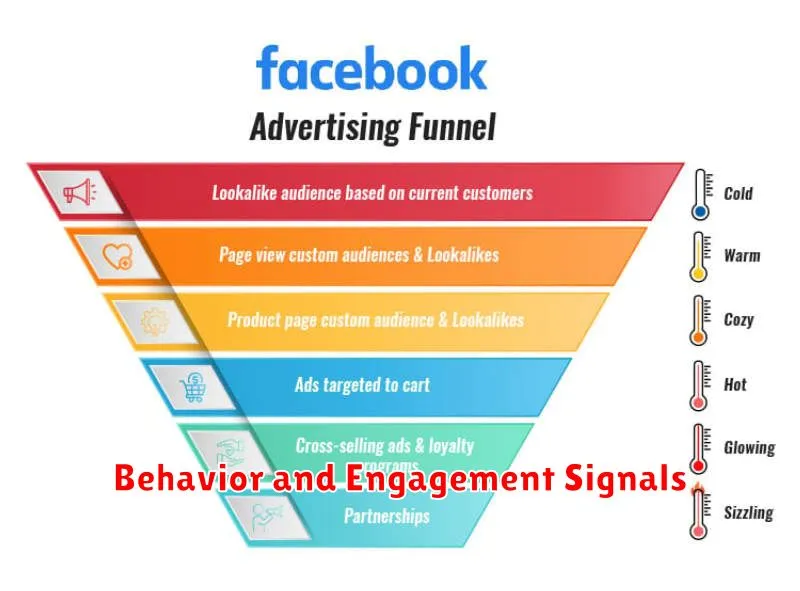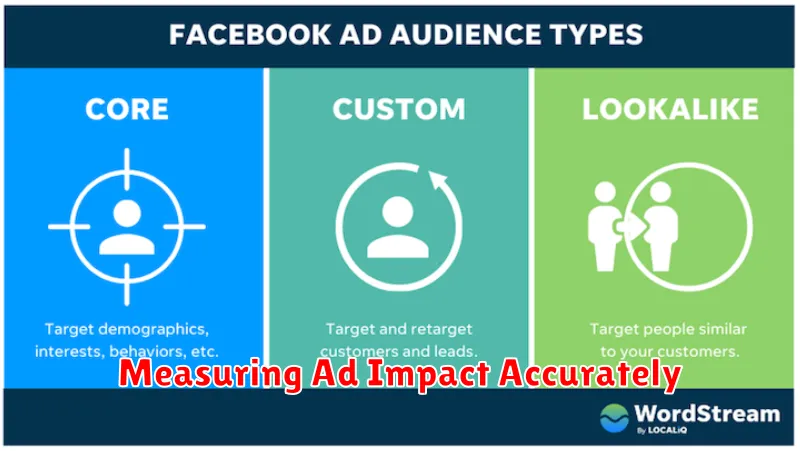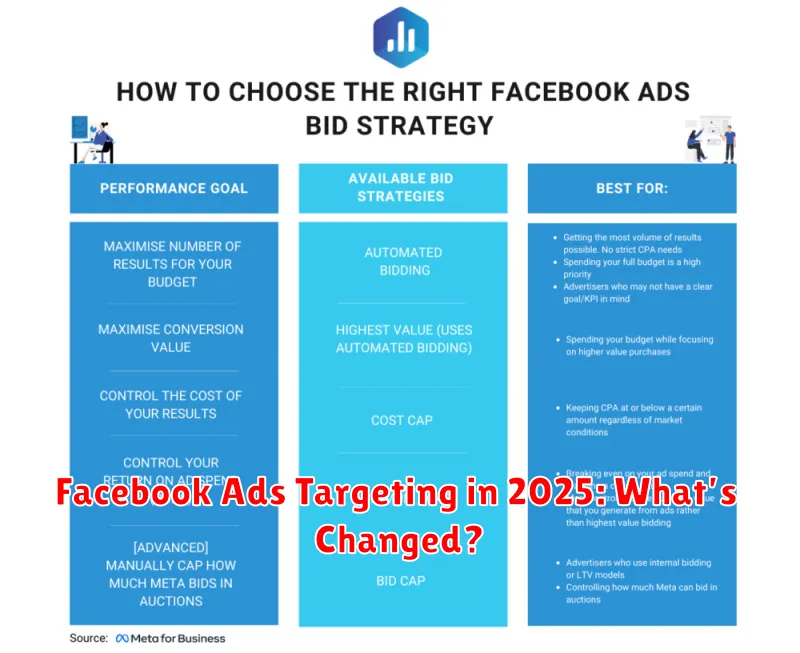Navigating the ever-evolving landscape of Facebook Ads targeting can be challenging. In 2025, understanding the latest changes and updates is more crucial than ever for running successful campaigns. This article explores the key shifts in Facebook Ads targeting, providing insights into what’s new, what’s different, and what strategies you need to adopt to maximize your return on investment (ROI). Whether you’re a seasoned marketer or just starting out, understanding the nuances of Facebook Ads targeting in 2025 is paramount to reaching your target audience effectively.
From evolving privacy regulations impacting targeting options to the rise of new ad formats and audience segmentation techniques, the world of Facebook advertising has undergone significant transformation. This article will delve into the specifics of these changes, offering practical advice and actionable strategies for leveraging Facebook Ads targeting in 2025. Discover how to adapt to the platform’s latest developments, optimize your campaigns for success, and stay ahead of the curve in the dynamic realm of Facebook advertising.
Overview of Facebook Ads in 2025
Facebook Ads in 2025 are projected to be even more dynamic and personalized. Advancements in artificial intelligence (AI) and machine learning (ML) are expected to further refine ad targeting and delivery. This means advertisers can expect even greater precision in reaching their desired audiences, leading to higher conversion rates and improved return on investment (ROI). Focus on privacy will likely continue to shape advertising practices, requiring even more transparency and user control over data usage.
Automation will play an increasingly important role. Automated bidding strategies and campaign optimization tools will streamline the ad management process, allowing marketers to focus on strategic planning and creative development rather than manual adjustments. Expect to see more sophisticated campaign reporting and analytics, providing deeper insights into campaign performance and audience behavior. This data-driven approach will be crucial for optimizing ad spend and achieving marketing objectives.
Emerging technologies like Augmented Reality (AR) and Virtual Reality (VR) may begin to integrate with advertising platforms, offering immersive and engaging ad experiences. While still nascent, these technologies have the potential to revolutionize how brands connect with consumers. Continued investment in video advertising and short-form content is also expected, reflecting evolving consumer preferences and the increasing importance of mobile-first advertising.
Key Targeting Features You Should Know
Targeting is crucial for effective advertising. It ensures your message reaches the right audience, maximizing your return on investment. Understanding and utilizing key targeting features can significantly improve campaign performance by focusing your efforts on users most likely to engage with your product or service. Without proper targeting, your ads may be shown to a broad audience, resulting in wasted resources and a lower conversion rate.
Several key targeting features are commonly available across advertising platforms. Demographic targeting allows you to reach users based on age, gender, location, and other demographic information. Interest-based targeting uses user interests and online behavior to display relevant ads. Behavioral targeting analyzes past user actions, like website visits and purchases, to predict future behavior and target ads accordingly. Contextual targeting places ads on websites or within content relevant to your product or service. Finally, retargeting focuses on users who have previously interacted with your brand, encouraging them to return and complete a desired action.
By strategically combining these targeting features, you can create highly effective advertising campaigns. For example, layering demographic targeting with interest-based targeting can refine your audience to reach individuals who fit a specific profile and have expressed interest in related topics. Continuously analyzing and optimizing your targeting strategies based on campaign performance is essential for achieving optimal results and ensuring your budget is used efficiently.
Custom Audiences and Lookalikes
Custom Audiences allow you to target your advertising to specific groups of people who have already interacted with your business. This could include people who have visited your website, engaged with your social media content, or provided their contact information. By leveraging existing data, you can create highly targeted campaigns, reaching individuals who have demonstrated a prior interest in your products or services, thereby increasing the effectiveness of your advertising spend.
Lookalike Audiences, on the other hand, expand your reach beyond your existing customer base. These audiences are created by analyzing your Custom Audience and finding individuals with similar characteristics and online behavior. This allows you to connect with new potential customers who are likely to be interested in your offerings because they resemble your current valuable customers. Lookalike Audiences are a powerful tool for scaling your advertising campaigns and driving new customer acquisition.
Using Custom and Lookalike Audiences in conjunction can create a comprehensive and effective advertising strategy. Start by targeting your known customers with tailored messaging through Custom Audiences, and then expand your reach to similar individuals with Lookalike Audiences to discover new prospects. This combined approach helps maximize your return on investment by ensuring your ads are delivered to the most relevant audiences.
Interest-Based Targeting Still Effective?
Interest-based targeting, the practice of delivering advertisements to users based on their online behavior and inferred interests, remains a relevant and effective advertising strategy. While facing challenges such as increasing privacy regulations and the phasing out of third-party cookies, its core value proposition of reaching receptive audiences persists. Relevance is key in advertising, and interest-based targeting allows marketers to connect with individuals likely to engage with their products or services, leading to improved campaign performance and return on investment.
The effectiveness of interest-based targeting is evolving, not disappearing. The deprecation of third-party cookies has spurred innovation in privacy-preserving solutions, such as contextual advertising, federated learning of cohorts (FLoC), and privacy sandbox initiatives. These technologies aim to maintain the benefits of targeted advertising while respecting user privacy. Marketers are adapting by prioritizing first-party data strategies and exploring alternative targeting methods like cohort-based and semantic keyword targeting. By focusing on building direct relationships with consumers and leveraging privacy-centric technologies, advertisers can still effectively reach interested audiences.
To maximize the effectiveness of interest-based targeting in the current landscape, focus on transparency and user control. Clearly communicate data collection practices and provide users with easy-to-understand options for managing their privacy preferences. This fosters trust and ensures a positive user experience. By embracing ethical data practices and adapting to evolving technologies, interest-based targeting can continue to deliver strong results for advertisers while respecting individual privacy.
Behavior and Engagement Signals

Behavior and engagement signals are crucial indicators of user interest and satisfaction. These signals encompass a wide range of user interactions, such as clicks, scrolls, mouse movements, video views, form submissions, and dwell time. Analyzing these metrics provides valuable insights into how users interact with content and platforms, allowing businesses to optimize their strategies and improve user experience.
By tracking engagement signals, businesses can identify high-performing content, understand user preferences, and personalize experiences. For example, high click-through rates on specific calls-to-action indicate effective messaging, while long dwell times suggest engaging content. Conversely, low engagement may signal the need for improvements in content quality, design, or user interface.
Utilizing engagement signals effectively requires careful analysis and interpretation. It’s important to consider the context of the data, such as the platform, the target audience, and the campaign goals. By combining behavioral data with other metrics, businesses can gain a comprehensive understanding of user behavior and make data-driven decisions to enhance performance and achieve desired outcomes.
iOS Privacy Changes and Workarounds
Apple has implemented significant privacy changes in recent iOS updates, most notably App Tracking Transparency (ATT) and privacy nutrition labels. ATT requires apps to explicitly ask users for permission to track their activity across other apps and websites for advertising purposes. This has had a major impact on targeted advertising, making it more difficult for businesses to personalize ads and measure their effectiveness. Privacy nutrition labels, similar to food labels, provide users with a summary of the data an app collects and how it’s used. This increased transparency empowers users to make informed decisions about which apps they download and use.
For businesses, adapting to these changes requires a shift in strategy. Focusing on first-party data, collected directly from users with their consent, is crucial. Techniques like contextual advertising, which targets ads based on the content being viewed rather than user profiles, are gaining importance. Additionally, exploring Apple’s privacy-preserving advertising solutions, such as SKAdNetwork, is essential for measuring campaign performance while respecting user privacy. Prioritizing user privacy through clear communication and data minimization builds trust and fosters stronger user relationships.
Users can further enhance their privacy by managing their app permissions carefully. Regularly reviewing and revoking unnecessary permissions can limit data collection. Enabling Apple’s Limit Ad Tracking feature further restricts personalized advertising across apps. Ultimately, understanding the privacy settings and features available within iOS empowers users to take control of their data and online experience.
Best Practices for Retargeting
Retargeting is a powerful tool to re-engage users who have previously interacted with your website or brand. To maximize its effectiveness, focus on segmentation. Divide your audience based on their behavior, such as products viewed, pages visited, or cart abandonment. This allows you to tailor your messaging and offers, making them more relevant and enticing. For example, someone who abandoned their cart might receive a reminder email with a discount code, while someone who browsed a specific product category might see ads showcasing similar items.
Frequency capping is crucial to avoid annoying potential customers. Showing the same ad too many times can lead to banner blindness and a negative brand perception. Find the right balance between staying top-of-mind and respecting your audience’s online experience. Experiment with different frequencies and monitor your campaign performance to determine the optimal number of impressions.
Finally, don’t forget to refresh your creatives regularly. Using the same ads for extended periods can lead to decreased engagement. Keep your campaigns fresh and dynamic by testing new visuals, ad copy, and offers. A/B testing can help you identify which variations resonate best with your target audience and improve your overall retargeting ROI.
Audience Overlap and Saturation
Audience overlap occurs when two or more marketing campaigns, channels, or content pieces target the same group of people. This can be beneficial if strategically coordinated, reinforcing messaging and increasing reach frequency. However, unmanaged overlap can lead to audience saturation.
Saturation happens when an audience is overexposed to marketing messages, resulting in decreased engagement, ad fatigue, and potentially a negative brand perception. Signs of saturation include declining click-through rates, lower conversion rates, and increased unsubscribe or opt-out requests. Analyzing audience demographics, interests, and engagement patterns across different platforms can help identify potential overlap and prevent saturation.
Managing audience overlap involves careful segmentation and targeting. By understanding the nuances within your audience, you can tailor messaging and channel selection to avoid redundant or irrelevant communication. Strategies include diversifying content formats, personalizing messaging based on audience segments, and utilizing frequency capping to control the number of times an individual sees a specific ad.
Testing New Formats (Reels, Shops)
Testing new formats like Reels and Shops is crucial for staying competitive and reaching new audiences. Reels offer a dynamic way to engage users with short-form video content, capturing attention and potentially driving traffic to your other platforms. Shops provide a seamless in-app purchasing experience, streamlining the customer journey and increasing sales opportunities.
Before launching, thorough testing is essential. This includes A/B testing different content styles, lengths, and calls to action for Reels. For Shops, ensure product information is accurate, pricing is clear, and the checkout process is smooth. Monitor key metrics like engagement, reach, click-through rates, and conversion rates to understand what resonates with your target audience and optimize your strategy accordingly.
Post-launch analysis is equally important. Track performance and gather user feedback to identify areas for improvement. Iterate on your content strategy based on the data collected to maximize effectiveness and achieve your business objectives. Continuously adapting to the evolving landscape of these platforms will ensure long-term success.
Measuring Ad Impact Accurately

Accurately measuring advertising impact is crucial for optimizing campaigns and maximizing ROI. It involves tracking key metrics that demonstrate how effectively your ads are influencing consumer behavior. Key Performance Indicators (KPIs) like conversions, click-through rates (CTR), and impressions provide quantifiable data that can be analyzed to understand ad performance. By focusing on these metrics, businesses can identify what’s working, what’s not, and adjust their strategies accordingly.
Beyond basic KPIs, analyzing attribution is essential to understanding the customer journey and assigning credit to different touchpoints. Attribution models help determine which marketing efforts, including specific ads, contributed to a conversion. By understanding the role each ad plays in the sales funnel, marketers can optimize spending and target their audiences more effectively. This leads to more efficient campaigns and better allocation of resources.
Choosing the right measurement tools and platforms is also critical. Utilizing analytics dashboards, ad platform reporting, and other marketing technologies can provide a comprehensive view of ad performance. These tools offer valuable insights into audience demographics, engagement patterns, and conversion paths. By leveraging these resources, marketers can make data-driven decisions to refine their ad strategies and achieve better results.

